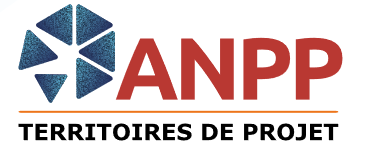Mobility at the heart of the Territorial Poles and Countries
Mobility survey in project territories
January 2023
Association Nationale des Pôles territoriaux et des Pays (ANPP - Territoires de projet)
The Association Nationale des Pôles territoriaux et des Pays (ANPP) represents and federates the Pays, the Pôles d’équilibre territoriaux et ruraux, the project territories and their development councils, in a global, strategic and forward-looking approach. Its mission is to share experiences between these territories and to be the medium for a permanent exchange of information and good practice between them, between their representatives and those of local authorities, the State and local players. The Association supports its members in their actions and makes their contributions to the public authorities based on feedback from practices in the field.
To download : enquete-mobilite-1.pdf (1.9 MiB)

ANPP - Territoires de projet supports and assists project territories as they take on mobility responsibilities.
Since 2019 and the provisions of the Loi d’Orientation et des Mobilités, the legislator has wanted to decentralise the authority responsible for organising mobility, moving it from a regional level to a more local level, the community of municipalities. For many EPCIs, taking on this responsibility is an opportunity to work as closely as possible with local issues, and to provide mobility solutions.
This is an even greater opportunity for the PETRs, because if the EPCIs in a PETR all take responsibility, it can be delegated to the supra-communal level. The Pays/PETR scale works on the perimeter of a catchment area, a mobility catchment area and an employment catchment area. This notion of catchment area is essential for working on mobility issues. As we know, local residents use their cars to commute to and from work, and most of these journeys are made outside the community of communes. This is the case, for example, for EPCIs close to a dense urban centre that attracts people.
Delegating responsibility to the PETR means working across a catchment area, to offer pragmatic and operational solutions. Becoming an AOM means we can activate several levers to finance our actions. As in the case of the Lunevillois PETR, one of the first areas to take on this responsibility, the PETR scale is proving its relevance in dealing with the issue of mobility.

A multi-faceted theme
Soft and low-carbon mobility, such as the cycling scheme, but also mobility diagnostics on behalf of EPCIs, support for programmes and actions to promote car-sharing and car-pooling, and territorial cooperation are all illustrated in this mobility survey. The Pays/PETR scale is a tool made available to member EPCIs, which, if used judiciously, can combine forces and pool skills.
The provisions of the LOM law, such as the mobility payment, as well as incentives, aid and subsidies from various levels - Europe, the State, the region, ADEME, etc. - can be mobilised and used to carry out the survey. - are available to provide mobility solutions in sparsely populated areas. For many French people, living in rural and peri-urban areas and relying on their car to get to work is their only means of mobility. By working on a logical and relevant scale, such as that of the PETR/Pays, solutions can be created and opportunities for local residents created. Car-sharing lines are being set up in the Déodatie PETR, car-sharing in the Lunévillois, mobility diagnostics in the Bruche-Mossig and inclusive solutions in the Chataigneraie Limousine.
The Mobility Orientation Law
Law no. 2019-1428 of 24 December 2019, known as the Mobility Orientation Law (LOM), includes as one of its objectives the coverage of the entire national territory by a mobility organising authority (AOM). Up until the LOM law, communities of conurbations, urban communities and metropolises automatically assumed responsibility for AOMs. The LOM law encourages communities of communes to take on the AOM remit and in turn become mobility organising authorities. This responsibility enables communities of communes to offer mobility solutions to local residents, including the opportunity to offer alternatives to the private car. If the community of communes takes on the responsibility, it can exercise it within its own territory, or transfer the responsibility to a supra-communal level such as a mixed syndicate (PNR, PETR, Pays). If, by the summer of 2021, the community of communes had not decided whether to take on this responsibility, it would de facto revert to the Region.